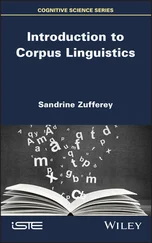(exercise 4 and 5).
Turning to a different aspect of morphological organisation, one of the issues which concerned us in section 10 was the relative positioning of derivational and
Children and words
191
inflectional affixes and the possibility of combining both sorts of affixation with compounding. We also suggested that lexical entries will contain information about irregular inflectional forms (brought, went, teeth, mice, etc.) but that regular forms would not be listed in this way, as they can always be produced by reference to the rules of English morphology. Now, among derivational
processes, some appear to be entirely regular, including that which adds -er to a verb to form an agentive or instrumental noun, and the productivity of this process can readily be attested by noting that we are comfortable with a noun like e-mailer, derived from the verb e-mail, itself presumably a conversion from the noun
e-mail. If, in the future, some individuals develop the capacity for transmitting mail mentally (mail which will be unadventurously dubbed m-mail), as soon as any English speaker cares to think about it, the transmitters will become
m-mailers. We must conclude, then, that the process of -er suffixation can freely consult the lexical entries of verbs and do its work on whatever it finds there. This capacity for creating new forms also appears to apply to compounding, and one particular such process, alluded to in section 11, combines an -er suffixed noun with another noun which could function as an object of the verb from which
the -er noun is derived. Thus, we find compounds such as those in (182): (182) a.
taxi-driver
b.
road-mender
c.
horse-rider
d.
crossword-compiler
e.
net-surfer
From our present perspective, (182e) is the most interesting of these; it indicates that this compounding process is alive and well, as wasting one’s time by surfing the net (indeed, the net itself and surfing in this sense) were unknown until relatively recently.
What the above discussion suggests is that the formation of compounds like
those in (182) is entirely rule-governed. Consultation of a lexical entry produces the base form of a verb, which undergoes -er suffixation. Further consultation of the lexicon produces a noun which then enters into a compound with the derived nominal (see section 10 for the argument that the processes take place in this order rather than the reverse). We now consider the interaction of these processes with plural formation.
It is a well-known observation that the simple nouns appearing in the com-
pounds in (182) cannot be pluralised (*taxis-driver, *roads-mender, etc.), despite the fact that a taxi-driver usually drives more than one taxi, a road-mender typically mends many roads, etc. This is readily explained if we adopt the account of the previous paragraph and suppose that regular inflectional processes such as plural formation only occur after derivational processes and compounding (this will, of course, enable us to deal with taxi-drivers, road-menders, etc.). But now consider nouns which have irregular plurals, such as geese, teeth and mice. Given our assumptions about lexical entries, these forms appear in such entries. In
192
words
principle, therefore, they (unlike regular plurals) are available to be involved in the formation of compounds.
We can pursue this informally by considering a hypothetical situation. Suppose that you live in a house near a lake. During the spring, early in the morning, the local geese mate noisily leading you to lose sleep. Mercifully, you discover that the local supermarket stocks a powder which, when applied in small quantities, quietens geese. Your sleep is saved, but also your linguistic intuitions are aroused because on the packet containing the powder, you see not goose quietener but geese quietener, i.e. a compound of the type under discussion which includes a plural noun. Now, while goose quietener is OK, it is our view that geese quietener is also fine (certainly, considerably better than *ducks quietener) and, of course, if the irregular geese is available to take part in compounding, this is precisely what we would expect.
Now, it seems that children as young as three already have lexical entries and control of morphological processes which match what we are taking to be the
adult system. In a simple experiment, Peter Gordon presented children with a puppet who liked to eat various kinds of objects (e.g. buttons, teeth, mice, pins).
Pre-tests established whether the children (aged three to five) understood the singular and plural forms of the nouns tested, and they were then asked to tell the experimenter what they would call someone who liked to eat buttons, etc.
Depending on whether the noun being tested had a regular or irregular plural, the results were remarkably different. For regular plurals, almost all the children’s responses employed the singular form in the compound (button-eater); for irregular plurals, a large majority of the responses from those children who had exhibited knowledge of the correct form used the plural in the compound
(teeth-eater). This result suggests not only that children can perform quite complex morphological operations by the age of three, but that the organisation of their morphological systems and the relationship between this and the form of their lexical entries is already strikingly similar to that of adult English speakers
(exercise 6).
The semantic significance of early words
Above, we mentioned that a feature of the early vocabulary of many
children is that it contains one or more rather general verbs which are used to refer to a wide range of activities. If we turn our attention to the meaning of the child’s early vocabulary items, we meet the view that this widening of use is a feature not just of early verbs, but also of some nouns used to refer to concrete objects. We begin our discussion by briefly looking at some of the evidence for this claim.
The stories of embarrassment are largely apocryphal but contain an element of truth. A small child being pushed along the street points to an unknown man and squawks daddy! Sometimes, it is the milkman who gets this treatment in the
stories, but the general idea is that at a certain stage, children are likely to
Children and words
193
overextend the reference of some of their nouns to include inappropriate objects.
Other examples which are often cited include overextending doggie to refer to all hairy, medium-sized beasts and overextending ball to include all circular objects such as the moon. Early attempts to account for this phenomenon assumed that, for the child, nouns referring to concrete objects had a wider meaning than they have in the adult language; from this perspective, acquiring the meaning of such a noun involved gradually coming to restrict the set of objects to which it applies.
Now, the notion of ‘meaning’ which was employed in these discussions was the definitional one employing features that we have encountered and been somewhat cautious about in the previous section. Thus, we might suppose that from this perspective, the meaning of doggie for an adult might be along the lines of (183):
(183)
doggie – [medium-sized, hair-covered, four-legged, carnivorous, …]
The claim, then, is that children have only a subset of these defining conditions.
Furthermore, because the child’s world is dominated by that which is perceptually present, it is plausible to suppose that this subset consists of those features which are perceptually based. Thus, (183) might be replaced by (184), adopting the assumption that being carnivorous is not a property which is readily perceived by the small child:
(184)
Читать дальше
![Andrew Radford Linguistics An Introduction [Second Edition] обложка книги](/books/397851/andrew-radford-linguistics-an-introduction-second-cover.webp)











